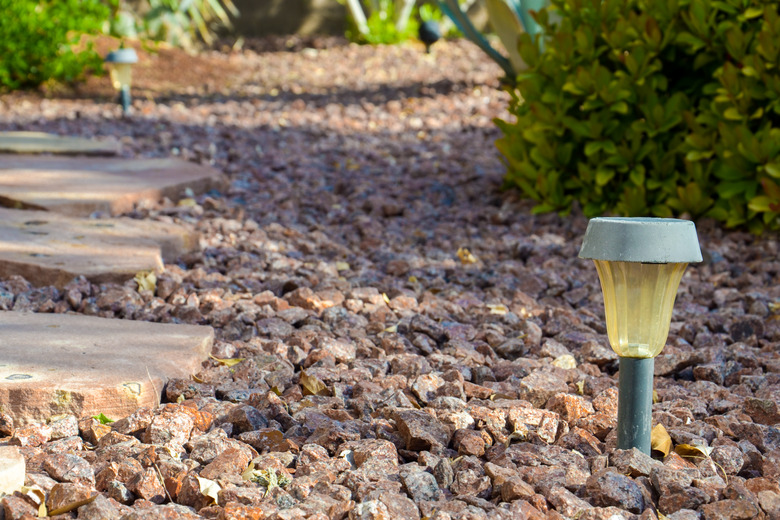How To Repair Low Voltage Landscape Lighting
We may receive a commission on purchases made from links.
Low-voltage landscape lighting can provide your home with added curbside appeal. It is used to light walkways and plants and makes the outside look safe, secure and more welcoming. Like anything else, though, these systems can break down from time to time. Repairing them is not out of the realm of possibility for a homeowner since it does not involve dangerous, high-voltage electrical wires.
How These Systems Work
How These Systems Work
Low-voltage lighting systems have four main components: transformers, wiring, light fixtures or bulbs, and timers or photocells. The transformer has different electrical components and steps down the main building's power from 120 volts to 12 volts. It has to have the right rating for the landscape lighting; otherwise, the voltage will be too high. This could cause the transformer to break.
The transformer has wires that go on the ground and connect to the outside light fixtures. These can be buried (no more than 3 inches) or can be left on the ground. Experts recommend 14-gauge wire for fixtures that use less than 200 watts and 12-gauge wire for more wattage.
The light fixtures sit 10 feet from transformers and the other lights. Placing photocells or timers on the transformer will make the lights go on and off at regular intervals. To repair your low-voltage landscaping lighting, you may need a Phillips screwdriver, a digital voltage meter, wire nut connectors, a small shovel and pliers.
Things to Check
Things to Check
Begin this project by doing some troubleshooting. Go to the transformer and check to see that it is plugged in and its power is on. Then, check its settings. If it is not set for the right times of day or night, reprogram it.
If the settings and power connectivity are as they should be, remove the transformer's front panel. Inside, you will see the lighting wire connection where the lights connect to the transformer. See if they are loose. If they are, you can tighten them with the screwdriver.
Working With the Wires
Working With the Wires
If the lights are still not working, check to see if the lights' wire connections are tight enough. You may have to dig up the splices if they are underground. Look carefully. If one appears loose, you must disconnect the power source and then unscrew the wire-nut connector.
If the wires or wire-nut connector appear corroded, you may need to replace the wire nut. Remove it and gently clean both ends of the wire. Take your pliers, splice them together and twist until they are tight. Then, you can put on a new wire-nut connector.
Additional Troubleshooting Methods
Additional Troubleshooting Methods
Should none of these methods fix your landscape lighting, you may want to purchase a digital voltage meter that can test the voltage of each light fixture. Halogen lights should be getting 10.5 to 12 volts; otherwise, they may be too dim or may burn out prematurely.
There could also be a bad connection in the lighting system, which could produce very low readings on the meter. Having too many lights on a circuit is another cause for malfunctions.
Check the transformer to make sure that it is the proper size for the job. Sometimes, minor adjustments can be made on the voltage controls, and this can fix the problem.
